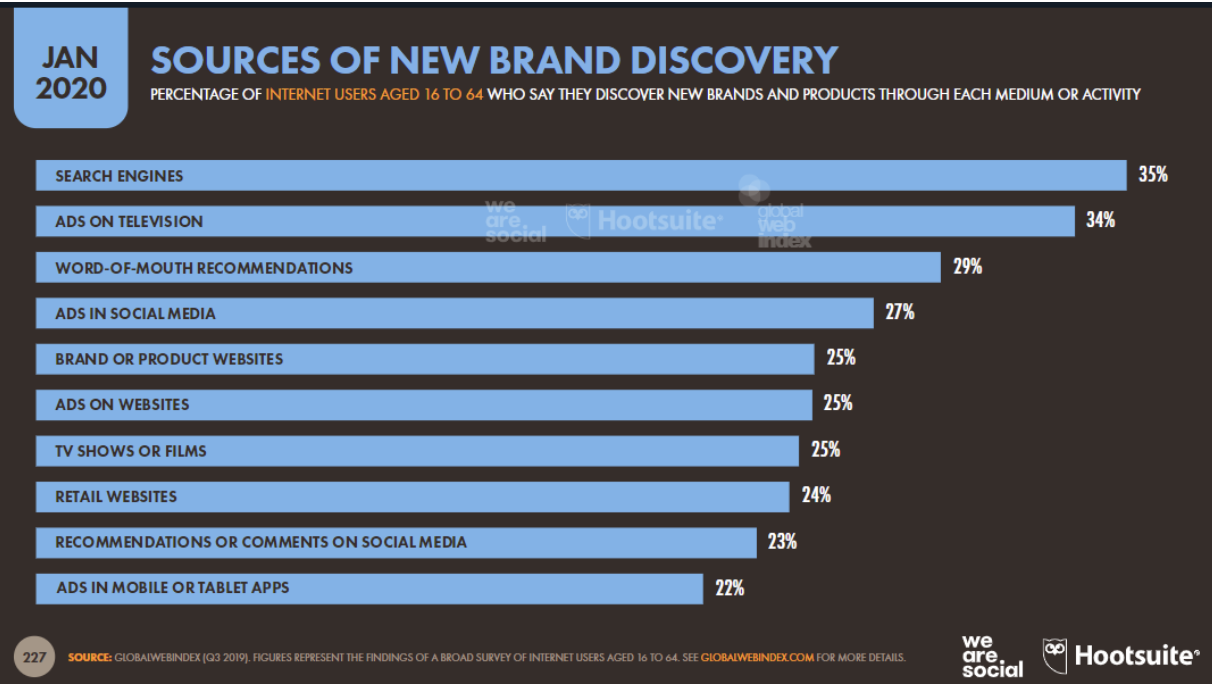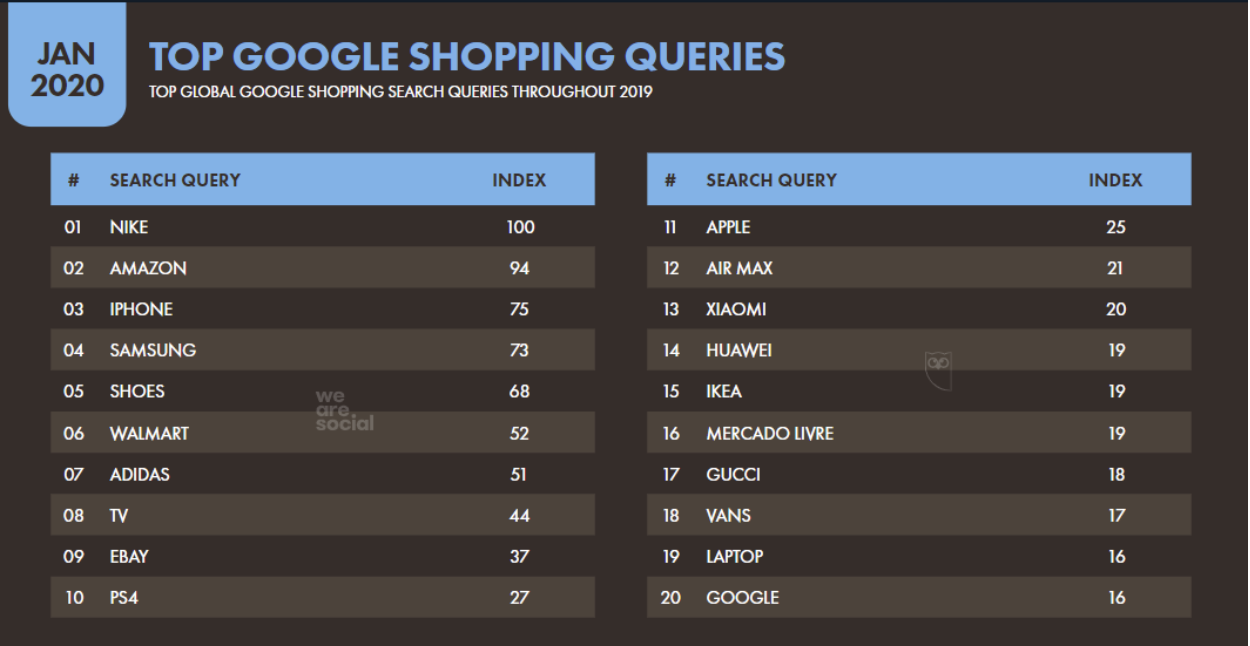Marketing Post COVID-19, Strategizing for Better Outcomes

As economies reel from the effects of months of lockdown, one thing has become apparent: online shopping has become the norm, with a considerable number of customers preferring and willing to maintain the new way of conducting business. Customer behavior has changed and continues to evolve. But what does this mean for marketing teams and professionals? More attention needs to be paid to customer wants, and marketing strategies reevaluated.
E-commerce coming into the home of online shoppers
In keeping with the demands of movement restrictions (or quarantine as the case may be), many have found new uses for the web, and for others, the experience is entirely novel. Shoppers either remain with trusted brands or are discovering new ones via social media reviews or influencers. The effects of income loss has also led to the discovery of new ways of interacting with e-commerce platforms, as consumers spend more time exploring all their options before choosing the one with the most value.
This presents a variety of problems for marketers. First they have to find ways to maintain brand loyalty, then they need to ensure that they are delivering more value on the same products, and keeping up with the growing competition.
Another result of the pandemic has been the increased awareness of the public to social change and leadership. Several voices have grown louder or emerged, questioning hitherto upheld beliefs and ideas. This has flown into e-commerce activities where, social media influencers’ opinions hold more sway in the choice of lifestyle products such as fitness products, skincare products, digital products, educational products and food products. Shopping is no longer a purely personal activity, but now comes with an extra sense of social awareness and responsibility. Brand loyalty is down to political correctness and the voices of social media influencers telling shoppers what they deem right, fair, and valuable. With many turning to their screens for entertainment and information, it seems that the silence of the pandemic has amplified the voices of these influencers.
Social media influencers as marketing channels
These influencers have become an effective branding channel. Social media influencers are more aware of their power, during a time when majority of people are embracing escapism as a means of dealing with the gloominess of the period. Quite a number of them have been busy taking full advantage of this, by producing more content in skits, blog posts, vlogs, and social media posts, advertising essential businesses such as food companies, healthcare organizations, fitness businesses, health insurance businesses and skincare businesses.
They have learned the art of communicating effectively with their audience, giving them what they want consistently and on a schedule. They are better than TV. They are harnessing the power of collaboration, and presenting a strong force of entertainment and information with fellow influencers. And as their posts go viral, so does their followership and influence increase.
What does this mean for marketers?
Marketers will do well to recognize these influencers as a channel to their audiences, and collaborate with them to endorse and raise awareness for their brands.
The power of social media influencers is their ability to reach their audience in a way that inspires trust and a sense of intimacy. Their fans will fight to defend them against trolls and anyone who opposes them. Because of this bias, consumers are more likely to trust an influencer over a TV ad.
But social media influencers really aren’t the best thing since sliced bread. Marketers will do well to also analyze their strengths and harness them. Influencers are best contracted to share specific product information, customer experience, and improve brand awareness. Nothing says trust more than a product review by an influencer.
Key questions for marketers:
- Which social media influencers are suitable for your business?
- What precise benefit will they add to your campaign? Brand awareness? Brand engagement?
- How often do you want to do business with them? Contractually or on a more permanent basis?
- Have you considered all the elements of their lifestyle? Which ones might be contrary to your organizational values and how can you work around it? Paul Logan’s appalling episode with a Japanese suicide video is an example of this.
Understanding consumer behavior
More than ever before, there is a need for marketing teams to understand consumer behavior. Analyzing information gathered from customer relationship management software via communication channels such as live chats, phone calls, social media engagement and instant messaging platforms, is important to understand and predict consumers’ needs.
Reports show that the effects of the coronavirus will be prolonged, much more than the few months that many assumed it would be. McKinsey reports that more than 75% of consumers have tried new brands and product options. This change in behavior should come as a relief to marketers: consumers have become more fluid and can sway their money in the direction of your products.
Yet, as each new week establishes the new normal, so will the dynamics of consumer behavior change. Marketers need to identify:
- What level of interaction consumers want to see on e-commerce platforms.
- How to deliver more value at competitive prices.
- How to simplify online ordering.
- How to manage the browsing experience to motivate more buying.
- How to give consumers more shopping control that generates leads.
Marketing teams should not be afraid to think outside the box and try new things. The McKinsey report reveals a surge in the patronage of online fitness training programs. It says that “70 percent even found it enjoyable”. It is safe to assume that, to some extent, consumers may not know what they want. Now, more than ever before, marketing teams can explore unconventional price structuring, campaign ideas, communication channels, and branding strategies.
Browsing web stores: Letting customers feel in charge
One of the advantages of online shopping is the access to information that it gives shoppers. From their devices they can access entire inventories, read up on product information, check out various prices, discount options, receive information on the delivery time, add goods to the virtual cart, pay for them, and send feedback.
E-commerce analytics provide a wealth of information on customer behavior, including the most preferred goods, time deliberating on purchase decisions, and patterns in decision making.
To elicit more useful information, marketers need to provide more features that make shoppers feel more in charge. Suggestions include:
- Adding features that enable customers to design their own products. This is useful to predict future product requirements and design.
- Quick surveys that ask the most pertinent questions on consumer experience and product review. Discounts can be used to induce and reward participation.
Giving more control to shoppers can also induce them to purchase the product. Marketers should consider providing more features that allow shoppers to experience the product in one form or another. Suggestions include:
- Simulations that allow the consumer to use the product in a virtual reality, will add the excitement and conviction that is required to make a purchase decision. A shopper for instance, can ride a brand new car in virtual reality, or try on make-up.
- Using the VoIP function, online sales assistants can also help to provide assistance in product selection, thereby imitating and recreating the experience of a physical store.
From warehouse to doorsteps
A lot of businesses are operating this model: using e-has commerce to bridge the gap between the warehouse and the doorstep of final consumers. In the new normal, traffic to physical stores is unlikely to return to the pre-pandemic rate. Marketers must recognize the greater need for consumers to be able to shop from the comfort of their homes, and receive their goods at their doorsteps without human interaction.
In this new era, speed is key. Marketers need to evaluate:
- Wait-times for logistics and shorten their process.
- Their model of delivery. Drones will rule the future, where human interaction is completely eliminated in the sales process.
Collaboration: A customer’s dream
Customers want more value for their money. This should not come as a surprise, as consumers are bombarded with a host of options and easy access to them. The onus is on marketing teams to attract shoppers with the best value for money. This can be made possible through more collaborative efforts.
Marketing teams across several across organizations should collaborate to develop new products that offer the best value for money. Products are scarcely used in isolation. A simple tooth brushing activity can involve the use of a toothbrush, toothpaste, mouth wash, dental floss and a face towel. Other toiletry products such as shaving creams, face masks, body lotions, shampoos, perfumes, shaving sticks, foot powders, and face washes, can feature in a unique product development. Think of a product featuring top brands such as Jergens, Burberry, Colgate, and Olay. By banding several similar products together to create a major one, marketing teams are stimulating customers to consider a wide range of products from several companies in one instance.
In doing this:
- Customers can see that marketers are anticipating their needs.
- Customers can recognize collaborations as a sign of innovation, camaraderie and team spirit. This boosts the brand image of the collective and shows them to be a force to reckon with.
- Shortens browsing time and ensures that purchase decisions are reached sooner.
- Strengthens the quality of featured products as part of a package, as against a single product striving to maintain relevance.
- Guarantees cash flow, and reduces overhead costs when teams pull their resources together.

Digital 2020 Global Report by Hootsuite.
Getting products and brands to speak louder on social media
A global report on digital statistics reveals the following:
- 84% of internet users use social media.
- In January 2020, 74% of internet users indicated purchasing online within the past month.
- In 2019, the top five most used apps in a global ranking were social media apps (WhatsApp, Facebook, Facebook Messenger, WeChat and Instagram).
- The average Facebook user worldwide clicked on ads 12 times in January.
- Also in January 2020, the total audience for Facebook ads was 1.95billion.
- The average spend time on social media (of users aged 16-64) is 2hours 24 minutes.
As products struggle to outshine one another before online shoppers, there will be a greater need for products to speak for themselves. Marketing strategies that get consumers buzzing about the product on social media, are crucial to this development. Pre-covid, products reviews and discussions prevailed on social media. However, recent research shows a rise in potential shoppers who discover new products and brands on social media, so it is imperative that efforts to amplify these discussions are intensified.
Ad placements on Instagram, Facebook and YouTube should greatly overtake traditional TV ads, where consumers are not spending the most of their time. However, there is also the need to ensure corporate social responsibility in protecting audiences from the downsides of social media marketing, such as trolling and hate speech.
In June 2020, several big brands challenged Facebook by taking their ads off their platforms in a bold move to #StopHateForProfit. This was done to force the tech giant to make changes in clamping down on harmful behavior on said platforms.
Questions marketing teams should be asking:
- What social media influencers are suitable for our products, and how can we capitalize on the quality of their image to amplify our products?
- What social media analytics are an indication of the new normal, and how can we adjust our campaigns to suit this?
- What are the current trends in social behaviour and social justice that we need to incorporate into our campaigns and product packaging?
- How can we work with the PR department to mitigate and manage crisis caused by trolls and irate customers?
- What proactive steps can we take (or should we be taking) to improve brand awareness, and facilitate corporate social responsibility?
Device-centered marketing
In January 2020, 7.94billion mobile devices were connected to the internet around the world. This accounted for 34% of the total number of connected devices. Marketing efforts should therefore lean towards mobile device users. Web development should include responsiveness to mobile devices to enable the ease of online shopping, payments, customer feedback, and customer support. In the same vein, e-commerce apps should be designed with instructiveness in mind. Users should be able to perform basic e-commerce functions seamlessly.
Key statistics:
- In January 2020, total value of global consumer spend on mobile devices was $120 billion.
- 91% of mobile time spent on mobile apps in January 2020.
- 99% of social media users do so via mobile devices.
While the model of advertising has become largely digital, marketers must also deal with ad-blockers activated by frustrated users who simply want to use their apps undisturbed. According to a report by Global Web Index, 49% of social media users are using an ad-blocking tool. Marketing teams must find ingenious ways to maintain audience engagement by ensuring that campaigns are catchy and entertaining.
Since mobile device consumers are spending more time on mobile apps, marketers should concentrate efforts towards product app development. This ensures that customers are up-to-date with the latest stock, product development, upcoming sales, and customer rewards. This brings the product right into the consumer’s hands, instead of campaigns that lead all customers to a central web store.
A pricing model that works
Pricing remains one of the top considerations in purchase decisions. With the expected global recession and the loss of income as a result of the pandemic, pricing will become a more important factor in product purchase.
As a result of this, marketing teams need to study consumer behaviour, identify the things that appeal to them, and use this information to incentivize them to make purchases. They should also consider price slashes and payment models that keep encouraging consumers to buy.
Since consumer behavior is key in product engagement, marketers should also consider researching what consumers consider to be a fair price.
Questions to note:
- Will consumers prefer to buy smaller sizes of a product, rather than a bigger product at a costlier price?
- Will customers prefer to pay more, so long as the product quality is improved upon?
- Will customers happily purchase at a higher price, if they recognize the scarcity of certain raw materials as a result of covid? Do marketers need to be more open with customers?
- Will consumers take a quality difference in order to maintain the same price?

Digital 2020 Global Report by Hootsuite.
Disrupting the disruption
Disruption has become a word we now know so well, because of the way the pandemic has upended the structure and pace of our lives. From the economies of scale, to businesses processes and operations, to the structure and mode of education, the capacity of parent professionals, the demand and outlets for entertainment, lifestyle choices, social behavior, health preferences, and technological demand and advancement, virtually everything has changed or is changing. Life, the way we used to know it, is becoming somewhat of a distant memory.
Yet in this disruption lies a valuable potential for improvement and an opportunity for innovation. Marketing teams can reset audience preferences, based on data analysis and a deep understanding of human psychology. They have the power to suggest new products, new business models, and new behavior. Marketers can indeed disrupt the disruption and create a new order out of chaos.
Suffice it to say that the way consumers react to the consequence of the pandemic, is up to marketers’ ability to reimagine the future.
Questions to note:
- What new behavioral patterns exist, and how can marketing teams use this to suggest new products and consumer behavior?
- What is the correlation between basic human psychology and the present consumer behavior, and how can the two intersect?
- How can artificial intelligence take over: from shopping initiation, budgeting, browsing, product ordering, payment and delivery supervision?
- What dosage of change is required at every point, in order to gradually ease consumers into a new dispensation?
- What basic human sentiments can be drawn upon to carry out poignant and effective campaigns?
Reimagining marketing teams
Today’s ideal marketing team is one which is dynamic, forward-thinking, creative and customer-focused. Marketing team leads have a huge burden to lead a new brand of employees, who are constantly motivated to anticipate future challenges and provide solutions to them. What’s more, most marketing team leads presently have to do this work remotely (as the pandemic continues to impose social distancing and health protocols).
Creating this dynamite team will involve employee training and proactive leadership that is result-driven. Operating in the new normal will require a new and updated way of work. Team leads need to ask:
- What is the capacity of my team now?
- What level do we need to operate on now?
- What employee training and employee training tools are necessary to facilitate this?
- How can I lead effectively, when team members are affected by the pandemic? How do I maintain team productivity?
- How effectively am I communicating with my team to align them to the vision of the future? What tools are necessary for this?
- How well are we communicating with our market now?
- How do we identify new markets?
- How best can I harness team ideas to create one goal?
- How do I motivate gifted team members?
- What team bonding activities can induce creative ideas?

